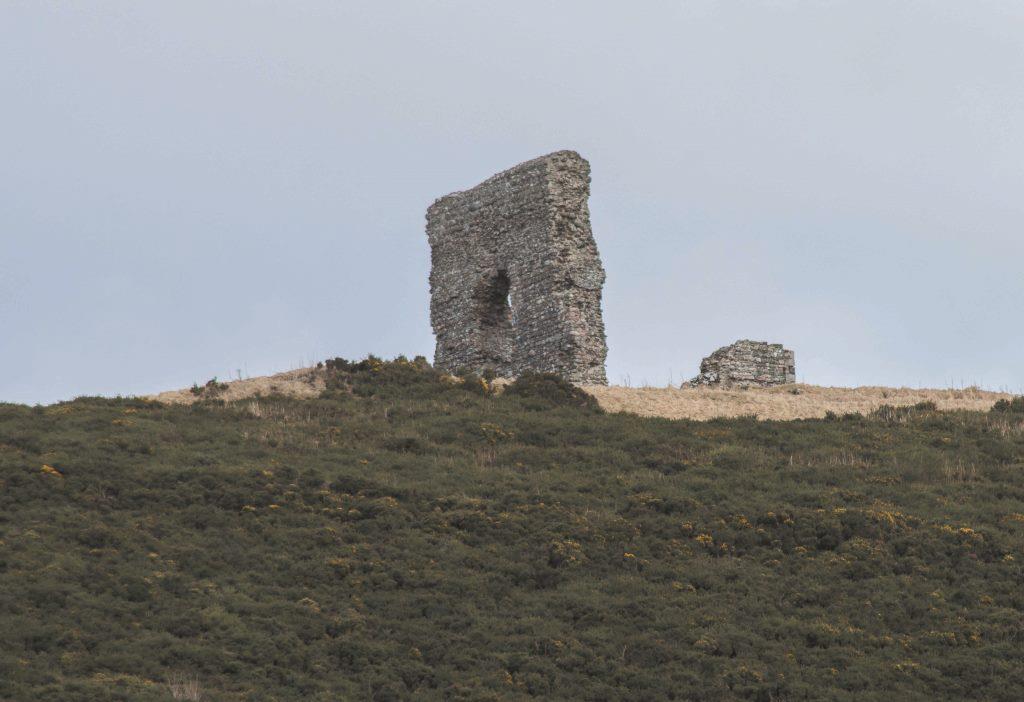Dunnideer Castle

Dunnideer Castle Details
Dunnideer Castle, ruined C13 tower and courtyard of the Balliols within earthworks of impressive Iron Age hill fort
- Closest To: Insch
- Access: Free Public Access
- Grid Reference: NJ612282
Dunnideer Castle is a ruined tower-keep occupying the defences of a prominent hillfort in upland Aberdeenshire. It is accessible via public footpaths leading across fields from a car park near the village. The oval shaped earthworks low down the hill are ploughed down and easily overlooked from the approach to the east, but represent twin ditches on either side of a bank – LIDAR imagery suggests a second defence lower down the hill. However on the summit is a narrower oval enclosure protected by a more significant ditch, inside which are the remains of a wall built from vitrified stone, and it is at the western end of this that the tower stands – also built from the vitrified stone from the old fort.
The castle is mentioned in a document of 1260 alongside other lands in the Garioch as being in the hands of Jocelin de Balliol, and which had previously given teinds to Lindores Abbey, a foundation of Earl David, brother of King Malcolm IV and King William – and who was Lord of Garioch. It appears that it had been held previously by John Balliol of Barnard Castle, Jocelin’s brother, and father of the future King John. There is a clear dynastic route of succession here, from David to his daughter Margaret, married to Alan, Lord of Galloway, from Margaret to her daughter Devorguilla, married to John Balliol. The castle is primitive, and unlikely to have been erected by the Balliols in the mid 13th century – and therefore may actually date back to the time of Earl David – or Alan of Galloway, since Garioch was split between multiple heiresses and there may have been “disputes” or reason to need a new seat of lordship in the area. At any rate, one of the co-heiresses was married to Robert Bruce, great grandfather of the future king, and this makes it highly likely that the castle was thrown down during the Wars of Independence when Bruce targeted his rivals the Balliols – although as a symbolic seat of barony it remained in use into the 17th century – perhaps the vaulted basement remained intact for that period.
Become a supporter of my work to access a more detailed history